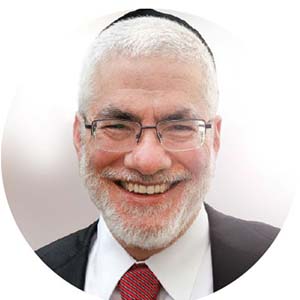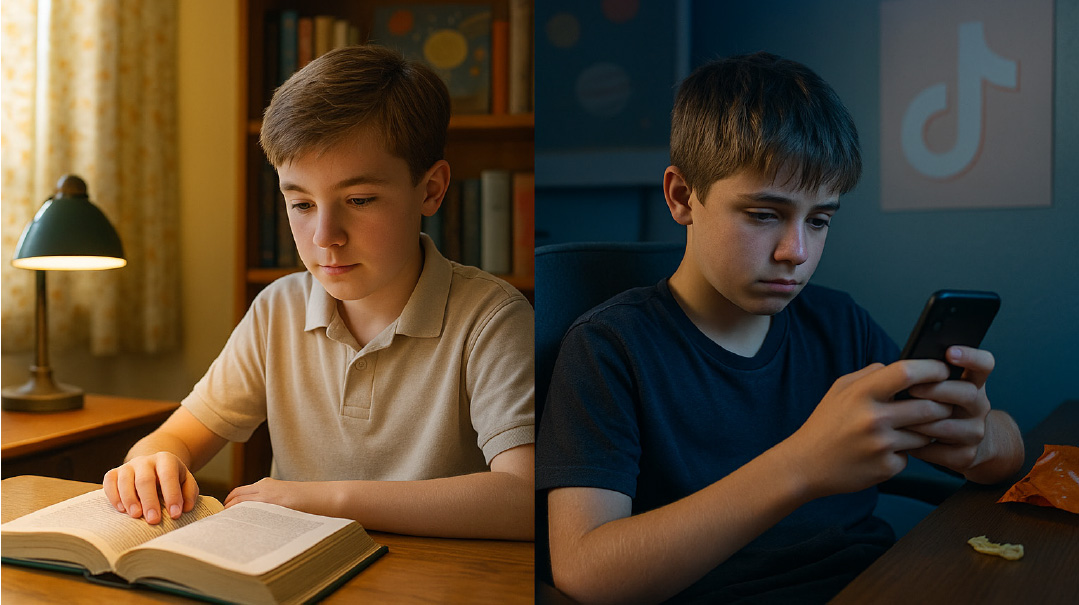A Week of Clarity

The history of the Middle East shows that there is only one way to win wars and secure peace: by seizing land

The week of parshas Mishpatim provided us with crystal clarity. The first point of clarification was of a negative variety: the precise nature of the Palestinian population of Gaza. So much for their alleged “innocence.” The autopsy reports on Ariel and Kfir Bibas, aged four years and five months, respectively, provide the refutation. Their murderers looked into their beautiful, trusting faces and killed them with their bare hands.
Nor was this the first time our Palestinian neighbors revealed their savage hatred. Recall the iconic photo of the Palestinian lynching of two hapless reservists who mistakenly entered Ramallah in 2001. A smiling figure holds up his bloodied hands from an upstairs window to the cheering crowd below, after having ripped his victims limb from limb. And it cries out from the videos proudly taken by perpetrators on October 7 of their butchery and torture of their Jewish victims.
Liel Liebowitz wrote in Tablet (“Their Time Is Up”), after the autopsies on the Bibas children and the purported body of their mother, Shiri, “Such gleeful cruelty has no parallel in the civilized world.”
He noted that a survey of Gazan opinion by Oxford University researchers found that 98 percent of Gaza’s population view the conflict with Israel as a religious war: The Jews have usurped Muslim land. Accordingly, close to half want to see Israel destroyed and a sharia state established in its place; another 20 percent would settle for the forced removal of all the Jews of Israel; and 17 percent would be satisfied with the grant of a “right of return,” a slower and gentler end to Israel.
Many of the Israeli hostages, if not most, have been held by local families, not by Hamas fighters. And yet not one story has yet emerged from any of the returned hostages of any human kindness shown to them by their captors — apart from one Hamas fighter who provided Agam Berger with a siddur, albeit as a prelude to presenting her with a Koran. Released hostages have told of being “abused and tormented not by bearded zealots with guns but by mothers and fathers and daughters and sons.” Israel offered very large rewards for anyone providing information leading to the return of hostages. There were no takers.
Liebowitz holds out no hope for patient reeducation, such as took place in postwar Germany. The residents of Gaza are “faithful adherents of a stern interpretation of a still-young religion, who believe there is glory in putting the enemies of G-d to the sword.”
In conclusion, writes Liebowitz, the history of the Middle East shows that there is only one way to win wars and secure peace: by seizing land. And that is what Israel should do now that there is president who recognizes that Israel cannot live with two million neighbors on its southern border bent on killing as many Jews as possible, rather than improving their own lives.
“PRAISE HASHEM, all you nations; Sing His praises, all you peoples” (Tehillim 117:1). The Netziv asks why it is the nations, and not the Jewish People themselves, who will praise Hashem for His overwhelming love of Yisrael. He answers because the nations know better than we all the plans they hatched against the Jewish People and which were thwarted by Hashem.
We had a glimpse of the death and destruction planned for us when Israeli soldiers captured the plans for Hezbollah’s elite Radwan Force of battle-tested troops to invade Israel from its northern border, in conjunction with Hamas’s invasion from the south. Israeli troops also uncovered massive Hezbollah bases on the northern border from which the attack was to be launched.
Another such revelatory moment came the evening following the return of the Bibas sons. A young woman on a city bus in Bat Yam noticed a suspicious bag with Arabic writing on it. She notified the driver, who told all the passengers to disembark, before driving to a nearby bus depot and getting off himself. Minutes later, the bus blew up. Shortly thereafter, two other empty buses exploded, one in Bat Yam and the other in nearby Holon. Police sappers defused two other bus bombs in the central region.
Hillel Fuld, a blogger with an excellent reputation for accuracy, subsequently reported, presumably based on sources in the security services, that 15 buses had been booby-trapped in the same fashion, and were supposed to explode the following morning during rush hour. At the same time, five suicide bombers were supposed to detonate their lethal loads on the light rail. And these mass casualty events were to be the signal for an October 7–like invasion from Judea and Samaria. It appears, however, that the timing device on the bombs had been improperly set for 9 p.m. rather than 9 a.m., and thus detonated prematurely.
Whether everything in Fuld’s report turns out to have been accurate, one thing is clear: A number of very tragic events were narrowly avoided. And the prevention of mass casualties had nothing to do with the IDF or Israel’s vaunted security services. In short, Israel experienced something like an open miracle. Or as Amjah Taha, a UAE journalist put it, “G-d changed a.m. to p.m.”
FINALLY, WE SAW WITH OVERWHELMING CLARITY how the Jewish soul is powerfully drawn to Hashem — never more so than in times of pain — through the dramatic changes in mitzvah observance made by the hostages in captivity and their families yearning to be reunited with them.
Shelley Shem-Tov, whose son Omer was released parshas Mishpatim, wrote on social media just prior to his release: “There is no coincidence in the world. Everything comes from Hashem, may He be Blessed, and we are all His messengers. Exactly one year ago, parshas Mishpatim, we were invited to a Shabbat organized by Kesher Yehudi for families of the hostages, a Shabbat that I will never forget, the first Shabbos in my life that I kept k’hilchata. The Shabbos was so powerful, and the connection between the families of the hostages and the chareidi families, who enveloped us [with love], hugged us, prayed with us, sang with us [so strong]. It was a Shabbat filled with kedushah. That Shabbat I took upon myself to become shomer Shabbat, and since that Shabbat until today have been shomer Shabbat.... And this Shabbat I will have the privilege to hug my Omer, exactly one year from my first Shabbat.
“It is amazing how precise everything is. Thank you to Kesher Yehudi for that [first] Shabbat and for the connection that continues until today. Thank You to the Creator of the Universe for the protection He has given us and Omer. Ein od milvado.”
At that first Shabbos, Shelley spoke about how she and her husband had heard from released hostages how Omer insisted on making Kiddush every Shabbos, on a few drops of grape juice from a solitary bottle. He did so throughout the 500 days of his captivity, most of them spent in isolation in dark tunnels.
At a news conference after Omer’s release, Shelley began by reciting shehecheyanu, followed by “Hodu l’Hashem, ki tov,” and then offering her thanks to the Borei Olam.
Also present that first Kesher Yehudi Shabbat for hostage families were Neva and Shai Weinkert, whose son Omer was released together with Omer Shem-Tov. Neva and Shai were very far from religious observance when they came to that first shabbaton. But they have made an effort to keep Shabbat at each of the Kesher Yehudi shabbatonim, and actively participate in the singing, dancing, and tefillah.
When Merav Gonen entered Jerusalem’s Waldorf Hotel for the first shabbaton, she wanted to leave immediately. She felt she had been lured to a kiruv event. But Rabbanit Yaffa Deri went over to reassure her that there would be no pressure to perform any religious rituals. They became close over that Shabbat, and still remain in touch.
When Merav’s daughter, Romi, embraced her mother for the first time after her release, she declared, “I am Jewish, I was in captivity, and there I truly felt that I was Jewish. And being Jewish means keeping Shabbat. So, from now on, we will keep Shabbat.”
Due to the distance that Merav has traveled over the past year, from alienation from anything religious to speaking comfortably about Hashgachah Pratis, Romi received no pushback.
Danielle Gilboa was one of five IDF lookouts to return recently. (We have written at length at length about her fellow surveillance soldier, Agam Berger, who refused to work on Shabbos or eat any nonkosher food.) Upon her return, Danielle related how they had sung Shalom Aleichem every Leil Shabbat in Arabic to avoid detection.
In her absence, her parents dedicated two sifrei Torah — one of which is used to make a shul in the Gilboa home. Her mother, Orly, joked that Danielle would be shocked on returning home by three things: She has a new name — Danielle in place of the original Daniel; there is a shul in the house; and she is engaged, as the man she was dating proposed in absentia.
Eli Sharabi, returned from captivity in Gaza 66 pounds lighter, after more than a year of near starvation, only to learn, tragically, that his wife and two daughters had been murdered on Simchat Torah, as was his brother Yossi (though the latter’s family survived). In captivity, he began to recite Shema Yisrael every day. And his widowed mother has become a mainstay at Kesher Yehudi events, including speaking a number of times of her strong faith in Hashem.
Unlike Mrs. Sharabi, who comes from a traditional Yemenite background, Ohad Yahalomi’s mother, Esther, grew up with almost no religious background. Yet she became very involved with Kesher Yehudi, and learns regularly with several chavrutot. At every Kesher Yehudi event, she listens intently to every devar Torah, and frequently expresses her appreciation for her late life exposure to Torah and regrets at not having passed her newfound excitement to her children.
American-born Keith Siegel was one of the oldest hostages in Gaza. Upon his release, he attested that in his entire life he had never recited Krias Shema or made a brachah before eating. Yet in captivity, he came to the conclusion that being Jewish must have meaning and began repeating Shema Yisrael frequently and also reciting borei minei mezonos prior to eating. When his daughter Shir, who has come to Kesher Yehudi events and started learning with a chavrusa, asked him what special foods he wanted for his first Shabbat meal, his reply shocked her and her mother Aviva, who spoke of her own captivity at the first shabbaton: “The main thing I want is a Kiddush cup and a kippah.”
Surely, no one returned from Gaza to find those closest to him more changed than Sasha Troufanov: His friend Sapir Cohen, mother Yelena, and grandmother Irini, had all become religiously observant, after themselves being held captive for 55 days. For weeks prior to Simchat Torah, Sapir experienced a foreboding she could not shake. To calm herself, she began reciting Tehillim 27, which begins, “The L-rd is my light and my salvation, whom shall I fear? The L-rd is the strength of my life, of whom shall I be afraid.” During her captivity in Gaza, she recited the psalm constantly, and used it to lift the spirits of other captives with whom she was held.
Yelena came to every prayer event with an absolute clarity of vision that the only hope for Sasha lay with Hashem. At a Kesher Yehudi gathering at Kever Rachel, she prayed for some sign of life that Sasha was still alive. That sign arrived almost immediately in the form of a Hamas video. Her response: I should have davened for Sasha himself, not just a sign of life.
KESHER YEHUDI WAS a catalyst for some, but not all, of the changes mentioned. But Kesher Yehudi is not a kiruv organization, but one based on the intrinsic unity of the Jewish People: We care about you, we daven for your loved ones because you are a fellow Jew. And if you want, we are here to share with you our most treasured possession: a living relationship with Hashem.
Mrs. Tzila Schneider, the founder of Kesher Yehudi, has been learning for well over year with Anat Angrest, the mother of a soldier still in captivity. The latter is not yet religiously observant, yet the two are best friends, speaking on the phone every day, and often more frequently.
All it takes is to envelope our fellow Jews with love and support just because they are our fellow Jews. When we do that, the chances are good that they will want to find out what it means to be a Jew.
(Originally featured in Mishpacha, Issue 1052)
Oops! We could not locate your form.







